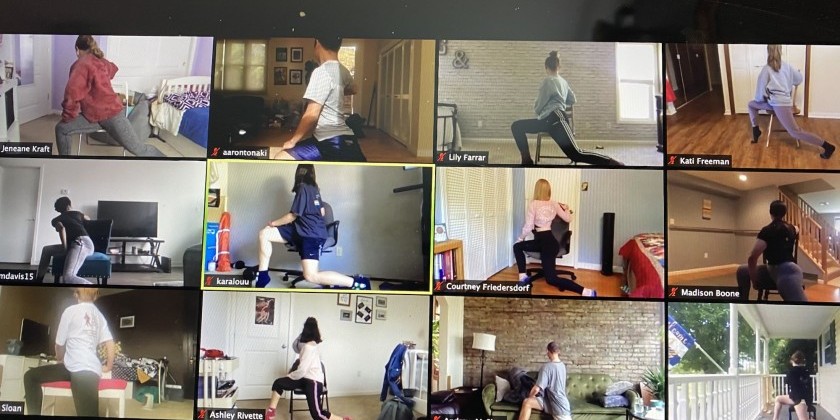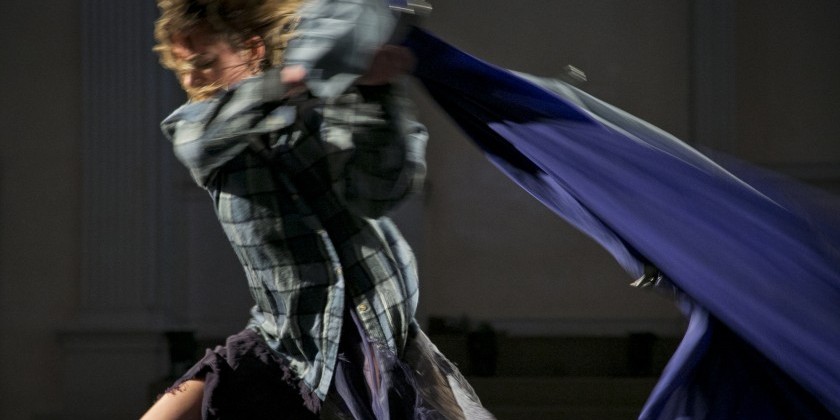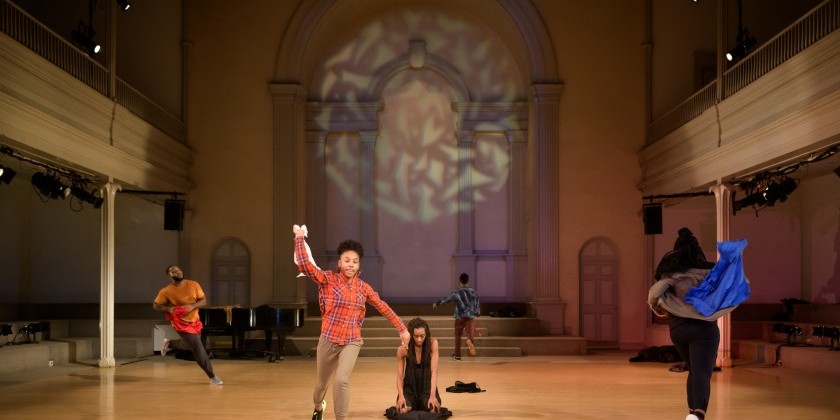IMPRESSIONS: Rosas in Anne Teresa De Keersmaeker’s “Work/Travail/Arbeid” at the MoMA

April 1, 2017
The Museum of Modern Art
The Donald B. and Catherine C. Marron Atrium
With dancers from De Keersmaeker’s company Rosas and musicians from the Ictus ensemble
Pictured above: Anne Teresa De Keersmaeker's Work/Travail/Arbeid at The Museum of Modern Art, March 28-April 2, 2017. Photograph © 2017 The Museum of Modern Art, New York
Despite contemporary dance’s frequent presence in museums, seeing it outside a traditional performance space can be dicey. iPhones are out, you may have to squeeze past naked people, and babies are waddling around. Yet in MoMA’s second floor atrium, it’s strangely easy to become engrossed in Work/Travail/Arbeid, performed by Rosas, Anne Teresa De Keersmaeker’s company.
The work asks a simple question: Can choreography exist in the scheme of an exhibition? Work/Travail/Arbeid confirms this, exposing the intersection where everyday life becomes choreography.
The piece deconstructs the hour-long Vortex Temporum (2013), utilizing the same choreography and music. Roles and sections are split and unfurl over a nine-hour loop (the dancers don’t perform for that length in one day). The Ictus ensemble plays the late French composer Gérard Grisey’s tensile and cacophonous score alongside the dancers.

Their palpable collaboration reflects De Keersmaeker’s preoccupation with dance’s relationship to music. In Work/Travail/Arbeid, the cast began the process by studying the score. Each of the six dancers were assigned one of the instruments, emulating their counterpart’s speed, timbre, and rhythm.
While the dancers listen intently and respond to the live score — an impressive feat considering the museum’s din — the musicians also react kinetically. Chest heaved forward, the flutist captivates as she darts her head side to side. Her connection to Cynthia Loemij, who follows the instrument’s trajectory, electrifies — a dynamic wordless conversation.
“In the beginning, it can be a lot,” says Loemij during one of her breaks. “You’re trying to familiarize yourself with the music. There’s a lot of counting, and you’re trying to understand the geometric floor patterns. You’re engulfed in it and think ‘I will never get this in my head.’ Then, in a few months, you master it.”

Having danced for De Keersmaeker since the ‘90s, Loemij indicates that she’d now find dancing a looser structure difficult. She says, “I don’t have to perform; I can just do what the thing is.”
The work becomes confounding after our conversation. Although I’m now aware of its complexity, it still seems spontaneous and unexpected. Artists must constantly navigate and negotiate. A dancer sidesteps a coat lying askew while another female performer brushes up against a seated person a phone inches from her face. Two women sit in a circle mapped on the floor that the ensemble uses as a pathway. As the artists, including the grand piano which is moved by performers, orbit toward them, they barely move. These moments jolt both spectator and performer, revealing the intimacy of a museum setting.
“I can see people smile and see the colors that they’re wearing,” says Loemij. “Sometimes when you breeze by them you can feel their hesitancy, but with others, you can even feel that they want a hand on their shoulder. To some, it’s almost like a game. I love that about this.”














